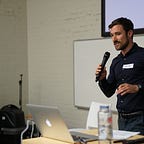How do we respond to uncertainty? How do we choose which opportunities to take? How do we stays true to our values in work and life?
I recently confronted these questions when I sat down to define and articulate me — well, me, as a professional consultant — to the world. I was building my website to tell my story and my work. It was harder than I expected.
Naturally, I started with my “why”: What type of world I want to create (vision) and what type of problems I want to solve (purpose). But I wanted to avoid platitudes and make it personal — I wanted something that would speak to my character and help me make decisions in times of uncertainty and evolution.
So, I wrote down several core principles; distillations of my experience, reading and insights about how I want to work and make an impact in the world.
While these principles may change as I grow and learn, they are a good first iteration.
A few principles I work by:
- Commitment to making a positive future: In taking actions, ask oneself, will the world be a better place with this action than without?
- Learn by doing and experimentation: While invention, innovation and art can not be measured ex ante (this is a paradox, the emergent thing does yet exist), this does not mean to not measure it. To the contrary, all the more reason to put in place a process to test theory and assumptions with practice and research. Logic and the scientific method are key protectors of truth and knowledge.
- Embrace collaboration and design: Collaboration requires leadership, understanding humans need and designing with multi-disciplinary teams. Done well, effective collaboration, focused on clear goals, can change the world. Look at Wikipedia.
- Create positive experiences: For too long I think we have been motivated by control, fear and adversarial campaigns. This does not work in the long term. Positive communication and visionary human stories are what motivate people.
- Realise the power of communication: Communication sounds simple. But I mean communication in the broadest sense — perception, language, seeing, hearing and feeling all make up communication. The more one realise the importance of language, deep listening and empathy in experience and communication, the better.
- Adopt the appropriate mindset: Adopting the mindset of a human centred designer means using empathy and observation to understand human needs. When needs are understood, mapped and designed for, we get results. Look at Apple, the first design-led computer company.
- Exercise leadership: This means, at its core, serving others and being adaptable to change. If we can stay resilient in the face of unexpected events, while still serving people effectively, we’re more likely to keep up positive energy and commitment to the larger goal.
I hope these words elicit some wisdom and insight. They will guide my work.
Kim Shore
